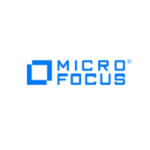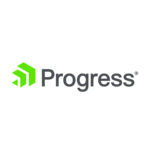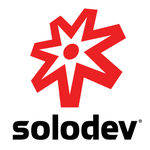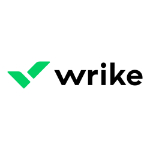TechnologyCounter provides genuine, unbiased real user reviews to help buyers make informed decisions. We may earn a referral fee when you purchase through our links, at no extra cost to you.
List of 15 Best Content Management Software
Showing 1 - 15 of 265 productsBigCommerce is a leading e-commerce platform that empowers businesses of all sizes to sell and grow online. With a user-friendly interface, customizable designs, and powerful marketing tools, BigCommerce makes it easy for merchants to establish a str...Read BigCommerce Reviews
BuzzSumo is a tool that allows businesses and content creators to gain insights into popular and trending content across various social media platforms. With its robust features interface, BuzzSumo empowers users to enhance their content strategy and...Read BuzzSumo Reviews
Wordable, the game-changing software that streamlines your writing process. Simplify and speed up your content creation with Wordables seamless integration with your favorite writing platforms, effortlessly transferring your drafts from Google Docs t...Read Wordable Reviews
Dorik is a solution for all your software needs. With its innovative features and user-friendly interface, it offers a seamless experience for creating professional websites and web applications. Dorik sets a new standard in the world of software, ma...Read Dorik Reviews
Avani Content Management System, a powerful and innovative platform designed to streamline your content management processes. With Avani CMS, you can easily create, organize, and publish your digital content, helping you to enhance your brand, engage...Read Avani Content Management System Reviews
OpenText Content is a leading software platform that revolutionizes the way organizations manage and utilize their content. It empowers businesses of all sizes to securely store, access, and share information, making collaboration and productivity se...Read OpenText Content Reviews
Sitefinity is a and versatile content management system that allows businesses of all sizes to easily create and manage their online presence. With an intuitive interface and a wide range of features, Sitefinity is the perfect solution for building a...Read Sitefinity Reviews
Contentful is a and versatile content management system that streamlines the process of creating, managing, and delivering digital content across multiple platforms. Designed for modern businesses and developers, Contentful provides a hassle-free sol...Read Contentful Reviews
Maglr, an innovative software that allows you to easily create and design interactive content for your business. With its user-friendly interface and powerful features, Maglr simplifies the process of creating engaging content that captivates your au...Read Maglr Reviews
Bynder, the leader in innovative content management and digital asset solutions, is revolutionizing the way businesses streamline their creative process. With its user-friendly interface features, Bynder is empowering companies to easily store, organ...Read Bynder Reviews
Confluence is a collaboration and knowledge management software designed to streamline teamwork and improve productivity in the workplace. Developed by Atlassian, it provides a centralized platform for teams to create, organize, and share ideas, docu...Read Confluence Reviews
Solodev CMS is a content management system that empowers businesses and organizations to create and manage their online presence with ease. With its intuitive interface and robust features, Solodev simplifies website management, allowing you to focus...Read Solodev CMS Reviews
Wrike is a project management software designed to help teams collaborate, organize, and achieve their goals efficiently. With its user-friendly interface and powerful features, Wrike simplifies the project management process for businesses of all si...Read Wrike Reviews
Third Light is a versatile and innovative software designed to streamline your digital asset management process. With its powerful features and user-friendly interface, Third Light provides a seamless solution for organizing, sharing, and protecting...Read Third Light Reviews
ContentStudio is an all-in-one content creation and management tool designed for marketers and businesses of all sizes. With its powerful features and user-friendly interface, ContentStudio streamlines the process of creating, curating, and managing...Read ContentStudio Reviews
- What Is Content Management Software?
- Top Reasons Why Businesses Need Content Management Software?
- What Are the Top Key Features of Content Management Software?
- What Are the Top Benefits of Content Management Software?
- What Are the Steps to Choose the Right Content Management Software?
- What Are the Types of Content Management Software for Different Industries?
- What Are the Technology Trends for Best Content Management Software?
- What Are the Deployment Options for Content Management Software?
What Is Content Management Software?
Content management software (CMS) is a significant software application that facilitates the management of digital material across diverse platforms and devices. The content can encompass a wide range of media types, including but not limited to text, photos, videos, documents, audio files, and more.
CMS content management system facilitates the seamless creation, editing, storage, and sharing of content for users. The best CMS software offers a user-friendly interface that enables users to remotely access and examine digital information. In addition, the platform offers a functionality known as workflow, facilitating effective communication among diverse parties pertaining to the material.
The primary objective of the best content management system is to enhance the ease and efficiency of content generation and management. The top content management systems optimizes the workflow and enables users to efficiently find, evaluate, and publish content. Several well-known examples are WordPress, Drupal, Magento, and Adobe Experience Manager.
In essence, the best CMS tools application facilitates the streamlined administration of digital material, enabling users to effortlessly generate, modify, store, and distribute content.
Additionally, the CMS content management system facilitates the optimization of workflow and enhances the efficiency of the review process, thereby simplifying the management of digital content.
Top Reasons Why Businesses Need Content Management Software?
1. Cloud based content management systems enable users to efficiently generate, modify, and oversee material with ease.
2. The CMS content management system provides users with the opportunity to tailor content according to the specific needs and preferences of diverse target audiences.
3. One of the key benefits of this approach is its ability to enhance productivity, time-management, and cooperation.
4. One of the advantages of utilizing a top CMS systems approach is the potential to decrease expenses associated with the creation and upkeep of content.
5. The implementation of automation streamlines laborious and error-prone manual activities.
6. The best CMS software offers a safe means of accessing content and implements permissions that are tailored to the needs and preferences of individual users.
7. The implementation of the best content management system enhances the efficiency of workflow management and streamlines the content approval processes.
8. One of the benefits of this feature is its ability to enhance the efficiency of organizing and categorizing content.
9. The best CMS software provides optimization capabilities for a variety of devices and languages.
10. The cloud based content management systems continuously observes and analyzes user actions and levels of involvement in real-time.
11. The top content management systems feature facilitates seamless integration with marketing automation and customer relationship management (CRM) technologies.
12. Improves search engine visibility and search engine optimization (SEO)
13. The CMS content management system monitors and records the various iterations of material and adjustments made by users.
14. The incorporation of multimedia and interactive elements significantly improves user experiences.
15. The inclusion of analytics enables the monitoring and measurement of content performance.
What Are the Top Key Features of Content Management Software?
1. Version control: The best CMS software offers the functionality of version control, enabling users to effectively store and manage multiple versions of their information.
2. Searchability: Content Management Systems (CMS) facilitate efficient searching and retrieval of content through the utilization of key phrases and keywords.
3. User Management: The best content management system allows users to establish profiles, allocate roles, and implement access control mechanisms to regulate the accessibility of specific content to authorized individuals.
4. Scalability: The top CMS systems provide the capability to effectively manage substantial volumes of content and adapt to accommodate expansion.
5. Security: The best CMS tools offer comprehensive security features to safeguard content and control its accessibility.
6. Workflow Management: Cloud based content management systems facilitate the sequencing of content-related operations by establishing a structured work cycle that enables efficient monitoring of content workflow and the automation of various tasks.
7. Adaptability: The top CMS systems are specifically engineered to possess a high degree of adaptability and configurability, enabling them to cater to diverse content formats and web-centric applications.
8. Integration: The best CMS tools possess the capability to seamlessly interact with various software applications, hence enabling users to leverage additional systems and client data in order to enhance content and establish a holistic perspective.
9. Archiving and Retrieval: The top CMS systems facilitate the systematic storage, organization, and retrieval of content, hence enhancing user convenience.
10. Analytics: The best content management system offers users the ability to analyze and report data, enabling them to monitor and evaluate the performance and reach of their websites.
What Are the Top Benefits of Content Management Software?
1. Improved efficiency: Information management software enables users to efficiently create, publish, save, and manage digital information.
2. Automation: The best content management system offers automated procedures that enhance the efficiency of content administration and publication.
3. Enhanced collaboration: The top content management software plays a crucial role in fostering collaboration among users and facilitating the seamless editing and creation of material from various sources, such as web browsers and mobile devices.
4. Greater accuracy: Content management tools play a crucial role in maintaining correctness and consistency in content creation, editing, and maintenance. They achieve this by offering users automated compliance and workflow rules.
5. Increased productivity: The top CMS systems facilitate the effective organization and management of digital content, resulting in enhanced productivity for users.
6. Increased security: Content management tools offer robust mechanisms for the storage and administration of confidential information, thereby guaranteeing the protection and confidentiality of data.
7. Reduced costs: Cloud based content management systems offer a highly effective means of overseeing and organizing digital information, hence resulting in decreased expenses associated with both production and upkeep.
What Are the Steps to Choose the Right Content Management Software?
1. Identify business goals: Prior to the selection of a top content management system, it is imperative to engage in the process of developing and documenting the specific business objectives that the system is intended to facilitate. Potential areas of focus encompass expanding customer experience, bolstering employee engagement, and augmenting marketing endeavors.
2. Research vendors: After the identification of the goals, the next step involves conducting research on various providers and the characteristics they provide. The best CMS tools is advisable to seek out providers who possess a well-established history of achievements, extensive experience in executing projects, favorable feedback from customers, and a platform that is easy to navigate.
3. Assess feature needs: Once a selection of potential vendors has been made, Cloud based content management systems is necessary to conduct a thorough comparison of their features in order to ascertain which ones align most accurately with the defined business goals. Please identify any deficient features and assess their potential for customization to align with the organization's requirements.
4. Test the platform: Prior to making a commitment to a certain vendor, top content management systems is advisable to do a comprehensive evaluation of the platform to properly examine its functionality and performance.
5. Make the final selection: Upon doing a comprehensive examination of the available research, rigorously evaluating the platform, and thoroughly deliberating the many characteristics, the organization is poised to arrive at its ultimate determination.
The process of selecting the optimal content management tools for a business is a crucial undertaking that necessitates careful deliberation and a significant investment of time.
What Are the Types of Content Management Software for Different Industries?
Content management software provides a diverse array of solutions tailored to various industries, encompassing both big media corporations and small-scale enterprises.
Types of content management software that are available include:
• Enterprise Content Management (ECM) Software: This particular software is specifically tailored to cater to the needs of extensive corporations and organizations that require a robust system for the effective storage, administration, and retrieval of digital content. Some examples of Enterprise Content Management (ECM) software are Alfresco, IBM FileNet, and OpenText Content Server.
• Customer Relationship Management (CRM) Software: Customer Relationship Management (CRM) software primarily centers around managing and enhancing client interactions and providing support services. Some examples of customer relationship management (CRM) software systems are Salesforce, Oracle Siebel CRM, and Microsoft Dynamics CRM.
• Digital Asset Management (DAM) Software: Digital Asset Management (DAM) software is employed for the purpose of storing, organizing, and facilitating the sharing of various digital assets, including but not limited to photographs, videos, sound clips, and documents. Some examples of digital experience platforms are Adobe Experience Manager, Sitecore, and Widen Collective.
• Collaboration and Knowledge Management Software: Collaboration and knowledge management software primarily emphasizes the facilitation of information and content sharing. Some examples of collaborative software platforms often used in organizations are SharePoint, Google Drive, and Atlassian Confluence.
• Social Media Management Software: This software facilitates the management of social media accounts and the monitoring of consumer interactions for businesses. Some examples of social media management tools are Hootsuite, Zoho Social, and SproutSocial.
• eCommerce Software: The aforementioned software is utilized for the establishment and administration of an electronic commerce platform. Some examples of e-commerce platforms are Shopify, Magento, and WooCommerce.
What Are the Technology Trends for Best Content Management Software?
The prevailing technical trends observed in the most advanced content management software for the year 2020 encompass cloud-based solutions, artificial intelligence, and machine learning algorithms. Cloud-based solutions offer increased scalability for top content management software that necessitate the handling of extensive and intricate data sets.
Furthermore, cloud storage solutions provide enhanced accessibility and streamlined synchronization, facilitating remote access to data for teams. The utilization of artificial intelligence and machine learning algorithms has the potential to enhance the precision of content management platforms.
Content management tools can be achieved through automated processes of data categorization and organization, as well as the provision of more sophisticated functionalities like content recommendation. The increasing significance of data analytics in gauging user engagement is evident as top content management softwareundergoes continuous evolution.
What Are the Deployment Options for Content Management Software?
Various deployment methods are available for content management software, including on-premises deployments, hosted or managed services, cloud-based software as a service (SaaS), and open source software.
On-premises installations entail the installation of content management software on the servers and hardware within the organization's premises. Hosted or managed services refer to the practice of entrusting the management of one's content to a third-party service provider. The concept of cloud software as a service (SaaS) entails the organization's subscription to a cloud based content management systems.
The content management tools is stored in a remote server infrastructure commonly referred to as the cloud, where it is maintained by the service provider. Access to the software is typically granted on a pay-per-use model. Open source software enables companies to exercise autonomy in hosting and managing their own material, as the software code is openly accessible to the public.















